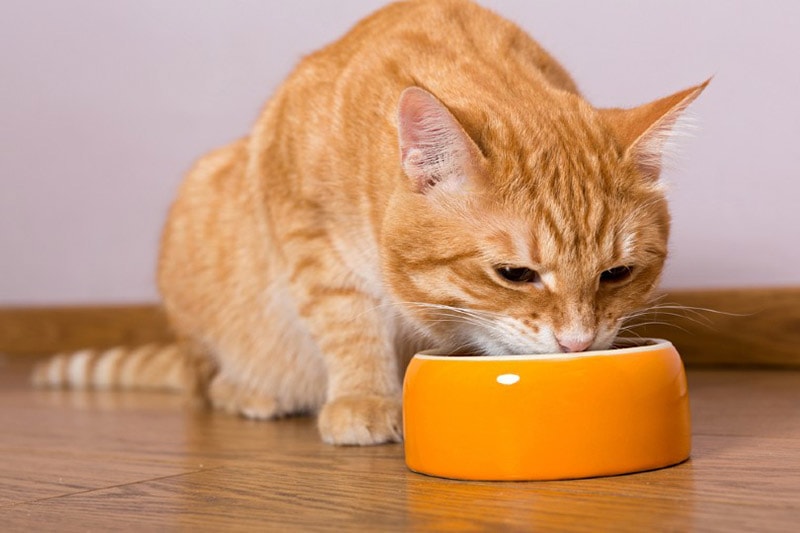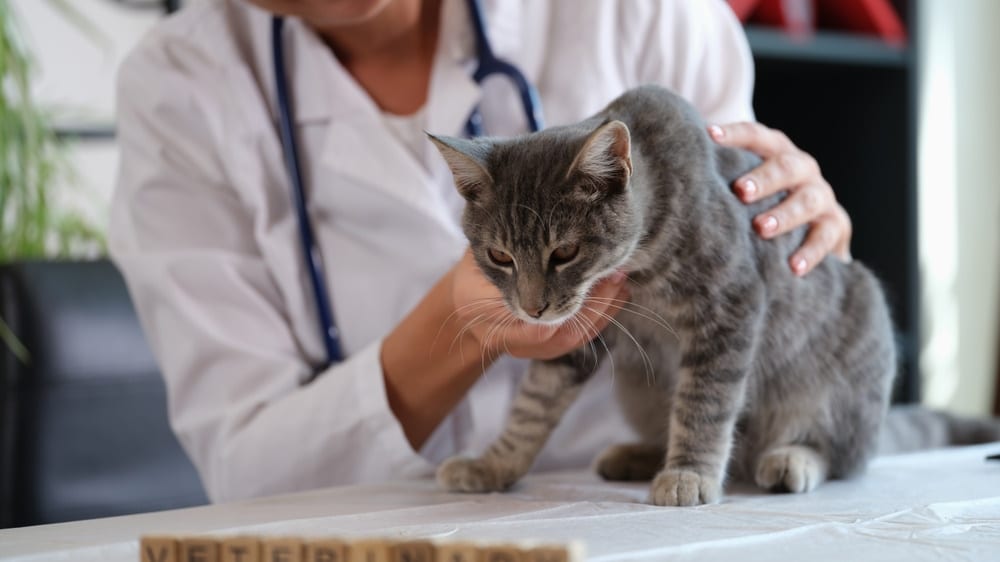Simple to digest and soothing to the throat, chicken noodle soup has been touted as the remedy for a variety of ailments in humans. Cats naturally love chicken, so they may be drawn to the soup regardless of its supposed healing powers. However, many foods that make humans feel great may make your cat feel terrible. Chicken noodle soup can definitely be one of those conundrums.
Cats can enjoy chicken noodle soup if it’s homemade with safe ingredients, such as chicken, noodles, and carrots. However, you shouldn’t give your cat commercially produced soup since it’s heavily laden with preservatives, sodium, and sometimes, toxic seasonings like garlic powder.
While a small amount of chicken noodle soup isn’t going to harm your cat, large amounts of it can. Let’s learn more about why chicken noodle soup isn’t the best choice for your cat in this article.
Can Cats Eat Chicken Noodle Soup? Is It Healthy?
Felines are obligate carnivores who, by definition, need nutrients found in animal tissue to survive. One of these is taurine, an essential amino acid found in protein from animal sources. Cats have a limited ability to manufacture taurine and must get it in adequate amounts in their diet.
Chicken is an excellent source of protein and taurine for cats. As a lean protein that’s relatively inexpensive and easy to source, chicken is a common ingredient in many commercial cat foods.
Feeding your cat chicken noodle soup only sounds natural since they already have chicken and veggies in their normal diet. Indeed, the dish would be a reasonable choice—if the soup purely consisted of chicken, carrots, and noodles. Homemade chicken noodle soup can be safe for your cat since you have the freedom to choose the ingredients. However, commercially produced soups don’t have the option to customize, and usually come loaded with potentially harmful ingredients.

Why Cats Shouldn’t Eat Chicken Noodle Soup from a Can
Let us be very clear. If your cat eats a small amount of canned chicken noodle soup, it’s probably not going to cause them much harm. However, it’s not healthy for your cat to eat chicken noodle soup a lot. Commercially produced soups require preservatives or sodium to keep the food shelf stable. Typically, it contains high levels of both, and neither are good for cats in large amounts. All animals need some sodium to live, but not necessarily table salt. In fact, most foods already contain sodium naturally. Cats require so little sodium that their food should already meet their sodium requirements if it’s AAFCO-certified.
Salt poisoning occurs when a cat eats too much sodium. This condition is unlikely to happen if your cat merely eats their own food with a few treats, or even eats canned chicken noodle soup only once or twice. Salt toxicity is not common but can result from eating salt laden table food or ingesting pure table salt, or from eating an excessive amount of chicken noodle soup. It can be deadly in severe cases. Signs of salt poisoning can manifest within three hours of ingestion and include things like:
- Diarrhea
- Decreased appetite
- Vomiting
- Lethargy
- Incoordination
- Excessive thirst or urination
- Tremors
- Seizures
- Coma
If your cat shows any of these signs, take them to the vet immediately.
Unfortunately, these signs overlap with other medical problems, such as allium toxicity that can result from eating garlic, onions, or leeks. Your vet may need to conduct blood tests to help determine the cause unless you witnessed them ingesting salt. In fact, seasonings derived from onions, garlic, chives, or leeks are also prevalent in commercially produced soups, which is another reason they aren’t safe for cats.

Can I Feed My Cat Homemade Chicken Noodle Soup To Make Them Feel Better?
While chicken noodle soup may be just what the doctor ordered for a human who’s feeling ill, your cat’s doctor will usually tell you to stick with their regular food if they’re feeling sick, or recommend a specialized prescription food to help them feel better.
Chicken noodle soup is not a recommended DIY solution for curing your cat’s upset stomach. If your cat is experiencing frequent vomiting or diarrhea, you should talk to your veterinarian about possible causes instead of diagnosing the problem yourself.
Chicken noodle soup should only be given to your cat as an occasional snack—and only if it’s a homemade recipe that’s free from toxic ingredients such as garlic powder and salt. Canned soups are almost never safe for cats because of the salt, preservatives, and seasonings.
If your cat is feeling poorly and the vet isn’t open, you can feed them plain boiled chicken. Like chicken noodle soup for humans, boiled chicken for cats takes them to their basic level that they need to survive – meat – while being low fat and easy to digest for their sensitive stomach. Veterinarians sometimes prescribe this simple DIY remedy for pet parents who may not be able to afford expensive prescription food, or if someone doesn’t want to completely switch their cat’s diet for a temporary minor illness.
Conclusion
Commercially produced cans of chicken noodle soups are almost never safe for cats because of the high amounts of sodium, preservatives, and seasonings. If your cat likes to hover around your bowl, you might consider making a feline-friendly pot of homemade chicken noodle soup to give them as an occasional treat. If your cat is feeling sick, you should take them to the vet to see what they recommend. Boiled chicken is like chicken noodle soup in the feline world and can help them recover from a minor tummy upset. However, visiting the vet is always recommended so you can find out the underlying cause of why they’re feeling poorly and help them feel better faster.
Featured Image Credit: Karolina Grabowska, Pexels












